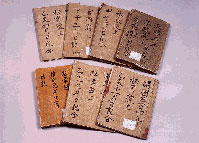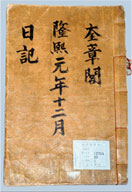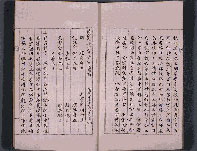Memory of the World
Memory of the World- Republic of Korea
-
Seungjeongwon Ilgi, the Diaries of the Royal Secretariat
Seungjeongwon, the Royal Secretariat of the Joseon Dynasty, was responsible for keeping Seungjeongwon Ilgi, the Diaries of the Royal Secretariat, a detailed record of the daily events and official schedules of the court, from the Joseon Dynasty's first king, Taejo, to its 27th and last, Sunjong. But through the vicissitudes of time, only 3,243 diaries are extant.
The extant diaries have detailed information on 288 years of the Joseon Dynasty, from March 12, 1623 (the 1st year of the 16th king, Injo) to August 29, 1910 (the 4th year of the 27th king, Sunjong).
Seungjeongwon Ilgi has the largest amount of authentic historic recordings and state secrets of the Joseon Dynasty. Also, it had served as the primary source to the Annals of the Joseon Dynasty, thus, its historic value is even greater than that of the Annals. It was designated as National Treasure No. 303 in April, 1999 and registered as Memory of the World in September 2001.
Its content contains the entire picture of Seungjeongwon, a pivotal office in a royal court, taking care of not only important national events but also simple routines as well. The king's appointments including gyeongyeon, or discussions with scholars on the Confucian and other Chinese classics, meetings with court functionaries, administrative acts, and affairs in the queen's inner palace were listed in the preface to a monthly diary.
The names of the royal secretaries and of the scribes are recorded in every day's diary. Underneath the list are recorded the names of daily deputy officials and their attendance or absence.The details of the main text are written in the order of the daily tasks of Seungjeongwon, daily regards to the king and his queen, the king's gyeongyeon, the Seungjeongwon's personnel affairs, reports from different ministries, and the king's commands.
On general principle, the daily records were supposed to be compiled into one diary every month. But most diaries recording the earlier period of a king were rather roughly written, so that two to five months were compiled into one diary. Later in a reign the content tended to increase, so that two diaries might be needed for one month.
The keeping of diaries began in the founding year of the Joseon Dynasty, but those of the kings before King Injo were burned to ashes during the Japanese invasions of Korea and by palace fires. Thus, the extant 3,243 diaries are preserved.
Seungjeongwon Ilgi vividly represents an Eastern monarchial sovereign system, politics, policy making, and power structure, while at the same time containing an invaluable legacy of documentary culture. The size of Seungjeongwon Ilgi is unprecedented in the world: about 242.5 million characters in 3,243 diaries. (Comparative data: Annals of the Joseon Dynasty contains 54 million characters in 888 volumes; Ershiwushi, the Compendium of Chinese History Books, 40 million characters in 3,386 volumes).Seungjeongwon Ilgi, recorded by royal secretaries and scribes, provides etymological data, as well as changes in Korean and Chinese writing, the co-use of Chinese and Korean in state documents around the time of the opening of the nation's ports, the influx of foreign civilization including the Japanese language and government system, and other diverse sources of information (social and cultural value).
It covers 288 years of weather observation from the 17th to 21st centuries. It also makes possible the accurate comparison of the lunar and the solar date (scientific and statistical value).
It shows how Catholicism started to take root under the time-honored Confucian society and the reaction of the authorities (religious value). Diaries written after the Political Reform of 1894, the 31st year of King Gojong, record Japan's intervention in domestic affairs. They include the compulsory agreement requested of the Joseon king and other behind-the-scene history in the court, making them primary historic sources for the study of modern times of the Far East.



 >
>